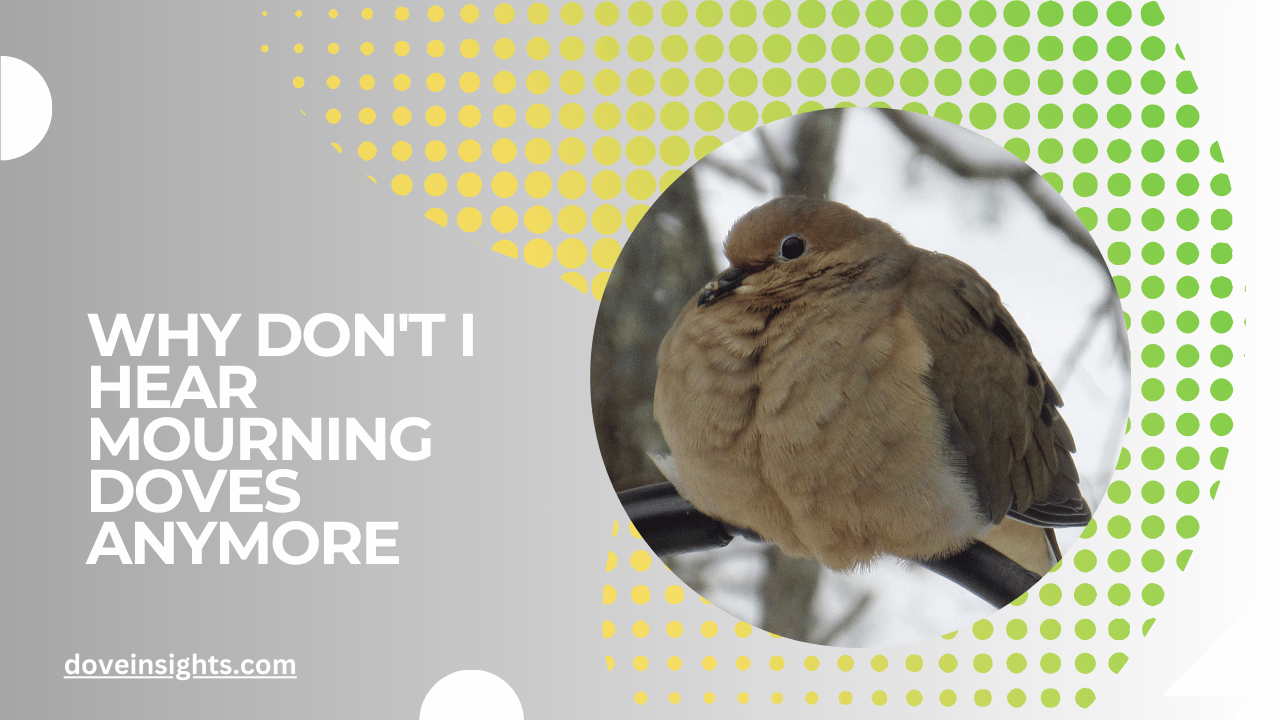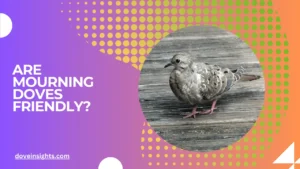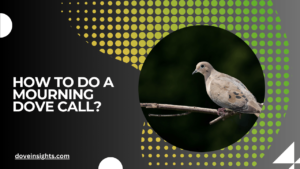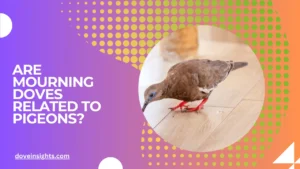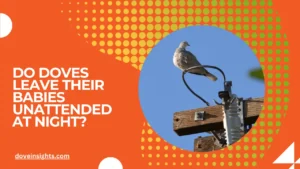The gentle, sorrowful cooing of mourning doves has long been a comforting sound in many neighborhoods, parks, and gardens.
Their calls often feel like a soundtrack to peaceful mornings or quiet evenings, grounding us in the rhythm of nature. But what happens when that familiar coo disappears? If you’ve found yourself wondering, “Why don’t I hear mourning doves anymore?”, you’re not alone.
The absence of their soft calls can feel unsettling, raising questions about what has changed in their environment—or ours.
Are they migrating, facing threats, or simply adapting to a new lifestyle? Understanding why their presence has diminished is crucial, not only to reconnect with nature but also to address the environmental challenges that might be impacting these birds.
In this article, we’ll explore the possible reasons behind this silence.
From habitat changes and predation to seasonal shifts and population dynamics, uncover the mystery of why you may no longer hear mourning doves and learn how you can help bring their serene coos back into your life.
Contents
Mourning Doves and Their Vocalizations
Introduction to Mourning Doves:
Mourning doves are known for their slender bodies, soft gray-brown feathers, and distinctive long tails edged with white. These gentle birds are a common sight across North America and are easily recognizable by their plaintive cooing sounds, which often evoke feelings of peace and melancholy.
Unlike many other birds, their coos are not songs but rather low-pitched calls that resonate with their soft and serene nature.
Purpose of Their Cooing:
The cooing of mourning doves serves several essential purposes. Male doves often coo to attract mates and establish territories, signaling their presence and strength to potential rivals. Parents also use coos to communicate with their offspring, ensuring the safety and coordination of their young.
These vocalizations are integral to the social dynamics of mourning doves, creating bonds and facilitating survival.
How Their Vocalizations Differ:
Unlike the melodic songs of robins or sparrows, mourning dove calls are monotonous yet soothing, often described as “whoo-OOO-hoo-hoo-hoo.” This distinct pattern, along with their soft fluttering wing sounds, sets them apart from other bird species.
Their coos, low and mournful, are a defining trait of their gentle demeanor and make them beloved by birdwatchers and nature enthusiasts alike.
Seasonal and Migration Patterns
Natural Migration Behavior:
Mourning doves are partial migrators, meaning some populations migrate while others remain year-round residents. In northern regions, they migrate to warmer climates during winter to ensure access to food and suitable nesting conditions.
Their migration is influenced by temperature, food availability, and day length.
Impact of Seasonal Silence:
If you notice a lack of cooing during specific seasons, it could be due to their migration to southern regions or reduced vocal activity during colder months.
As mourning doves prioritize survival over reproduction in winter, their cooing becomes less frequent, creating periods of seasonal silence.
Regional Variations:
Populations of mourning doves differ geographically. In the southern United States, their presence and vocalizations remain steady year-round, while northern areas experience fluctuations.
Understanding these regional differences can help explain why their familiar calls might be absent in your area.
Environmental Factors
Habitat Loss:
Urbanization, deforestation, and agricultural expansion have significantly impacted mourning dove populations.
Loss of trees and shrubs—key nesting and foraging grounds—forces these birds to adapt to less favorable environments, which can reduce their visibility and vocal activity.
Climate Change Effects:
Rising temperatures and unpredictable weather patterns have disrupted the natural cycles of mourning doves.
Climate change affects the availability of food sources like seeds and fruits, as well as nesting materials, leading to changes in their behavior and migration patterns.
Food Scarcity:
Mourning doves rely on consistent food availability, particularly seeds, which form the bulk of their diet. A decline in these resources due to agricultural practices or urban landscaping choices can impact their activity, making them less likely to vocalize or stay in one area.
Predators and Threats
Predators in Urban and Rural Areas:
Natural predators like hawks, owls, and snakes pose a constant threat to mourning doves, especially during nesting seasons. I
n urban areas, domestic cats and window collisions present significant risks. These predators and hazards contribute to stress-induced silence, as mourning doves may become less vocal to avoid detection.
Stress-Induced Silence:
When mourning doves sense danger, they tend to reduce their vocalizations, relying instead on their silent flight and camouflaged plumage to evade predators.
Stressful environments, such as those with heavy human activity or high predator density, can further suppress their cooing behavior.
Hunting and Its Impact:
In some areas, mourning doves are hunted as game birds, leading to localized population declines. This practice, combined with habitat destruction, poses a serious threat to their numbers and presence in certain regions.
How to Attract Mourning Doves Back
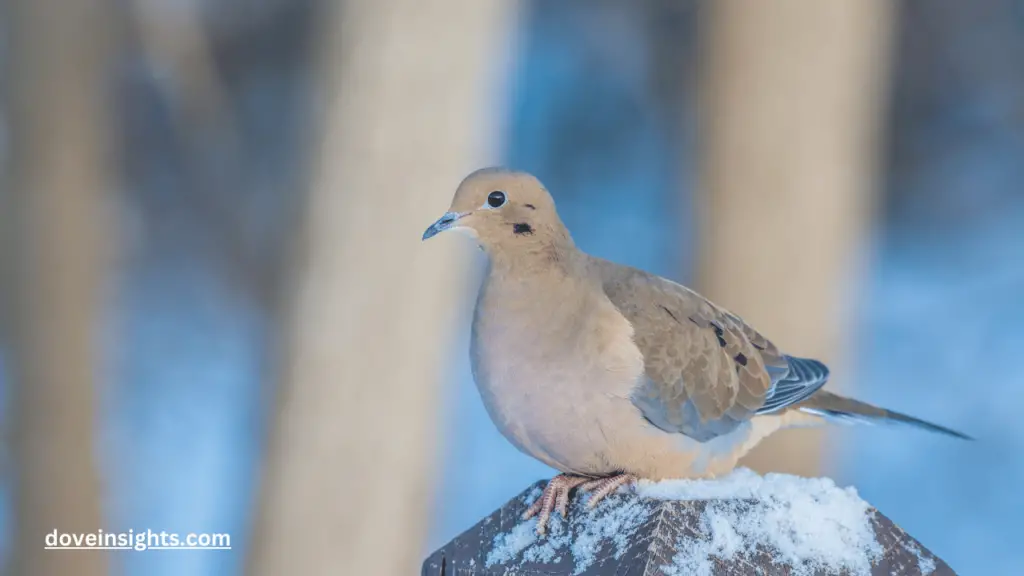
Creating a Dove-Friendly Habitat:
Providing a safe and welcoming environment is key to encouraging mourning doves to return. Install bird feeders filled with seeds like millet and sunflower, along with birdbaths for water.
Ensure the area is free from excessive noise and disturbance to make it stress-free for the birds.
Plant Native Vegetation:
Planting shrubs, trees, and native plants like wildflowers can provide mourning doves with the shelter and food they need. Opt for berry-producing bushes and seed-rich plants to support their dietary preferences.
Minimize Threats:
Reduce risks by keeping cats indoors, using bird-safe window treatments, and avoiding chemical pesticides in your yard. A safe environment helps mourning doves thrive and feel comfortable enough to vocalize and nest.
The Power of Citizen Science:
Participating in bird surveys and contributing to conservation efforts can help monitor and support mourning dove populations. By fostering awareness and sharing data, you can play a role in preserving these beloved birds and their calming coos.
Conclusion
The soft cooing of mourning doves is more than just a sound—it’s a symbol of peace and nature’s harmony.
Whether their silence is due to migration, habitat loss, or predation, understanding the factors behind it helps us appreciate the delicate balance these birds depend on.
By creating dove-friendly environments, minimizing threats, and supporting conservation efforts, we can help ensure the presence of mourning doves in our surroundings for years to come.
Their calls remind us of the interconnectedness of all living beings and the importance of preserving the habitats they—and we—rely on.
Let’s commit to actions that foster biodiversity and allow future generations to enjoy the serene beauty and sounds of mourning doves.
FAQ’s
Why don’t I hear mourning doves anymore?
Habitat loss, seasonal migration, and environmental threats may be the reasons.
Do mourning doves migrate?
Yes, many migrate to warmer areas during winter, especially in colder regions.
What do mourning dove calls mean?
Their coos are used for mate attraction, territory establishment, and communication with their young.
Are mourning dove populations declining?
While they remain widespread, habitat destruction and hunting have caused declines in some areas.
Do mourning doves stop cooing at night?
Yes, they are mostly diurnal and become quiet at night, especially during rest.

